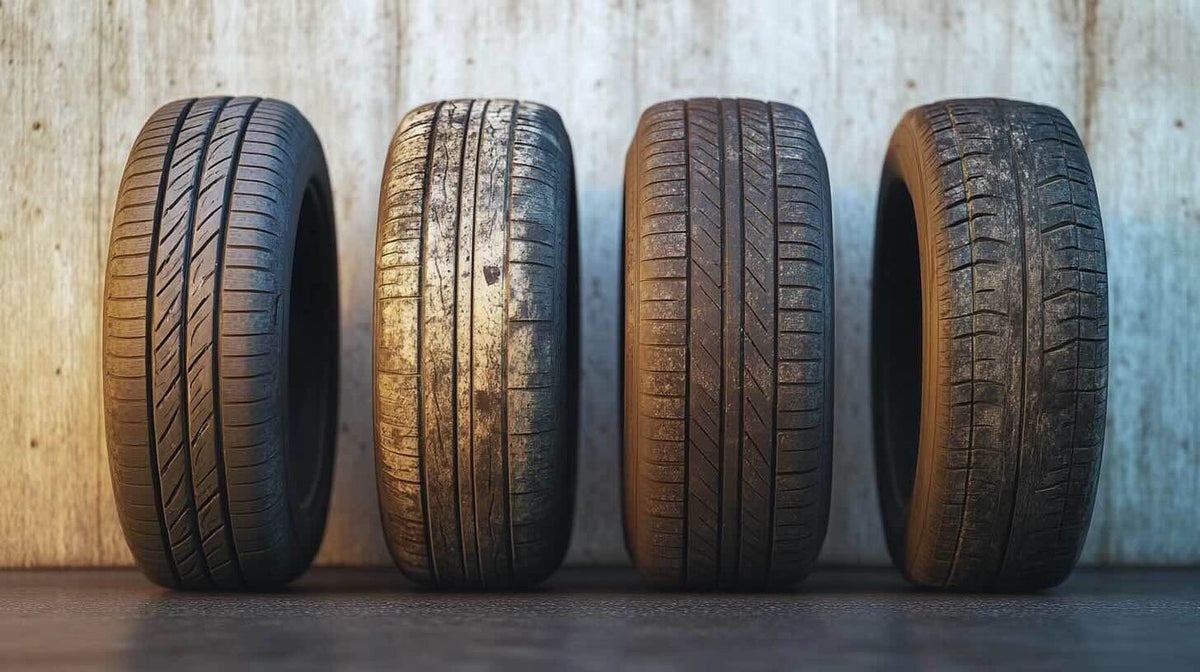
How Long Do Tires Last? Realistic Lifespan Tips for Drivers
|
|
Time to read 3 min
|
|
Time to read 3 min
Tires aren’t forever, even if they look fine at a glance. So how long do tires last? The general rule: replace tires every 5–6 years or after 60,000–80,000 kilometers of use—whichever comes first. But mileage and age are just starting points. This guide will show you what really affects tire longevity and how to know when it’s time for a replacement.
While manufacturers often estimate that tires can last up to 80,000 km or 6 years, actual performance depends on your usage and care habits. Here’s what to keep in mind:
Tread depth: If the wear indicators are flush with the surface (1.6mm), it’s time to replace.
Rubber aging: Tires naturally harden and degrade over time—even if tread looks fine.
DOT Code: Check the sidewall for a four-digit date stamp. You can also learn more in our guide on what the numbers on tires mean . For example, 2523 means the 25th week of 2023.
Driving Style & Habits
Aggressive driving, hard braking, and high-speed travel wear tires faster.
Climate & Exposure
UV rays, snow, and salt can all accelerate tire aging. Store tires properly in off-seasons. For long road trips, make sure you're running the right tire pressure for travel to avoid premature wear.
Tire Type & Usage
High-performance and winter tires tend to wear out faster than all-season models.
Inflation Pressure
Under- or over-inflated tires wear unevenly. Use tools like the Woowind LP1 from our car air pump collection to ensure precise PSI.
Maintenance Habits
Regular rotations (every 10,000 km), alignment checks, and inspections help maximize lifespan.
Look for these warning signs:
Tread depth at or below 1.6mm
Cracks or bulges on the sidewall
Uneven wear or vibration while driving
Punctures larger than 6mm
Age: over 6 years old, regardless of appearance
Rotate every 10,000 km or during each oil change
Check PSI monthly with a digital inflator
Replace tires in pairs (same axle) to maintain balance
Keep tires covered if stored outside
Use winter tires only in winter to prevent rapid wear
Accurate PSI makes a major difference in tire health. The Woowind LP1 offers digital pressure control up to 150 PSI, with a built-in screen and preset shut-off. It’s fast, portable, and ideal for proactive maintenance. Explore more options in our full electric air pump collection .
Tires don’t always show obvious signs when they need replacing. Even if they look good, aged rubber, low tread, or poor handling are red flags. Be proactive—track tire age, inspect monthly, and rely on precision tools like the Woowind LP1 to stay ahead of wear.
When in doubt, visit a tire shop and ask for a professional opinion. Your safety (and fuel economy) depends on it.
Most tires last between 60,000–80,000 kilometers, depending on driving habits, tire type, and maintenance.
Yes. Rubber deteriorates over time. Tires older than 6 years should be inspected and likely replaced—even with good tread.
In most regions, 1.6mm is the legal limit. Use a tread gauge or check built-in wear indicators.
It’s best to replace tires in pairs on the same axle to maintain balanced handling and traction.
Look for the DOT code on the sidewall. The last four digits indicate the manufacturing week and year (e.g., 2523 = 25th week of 2023).